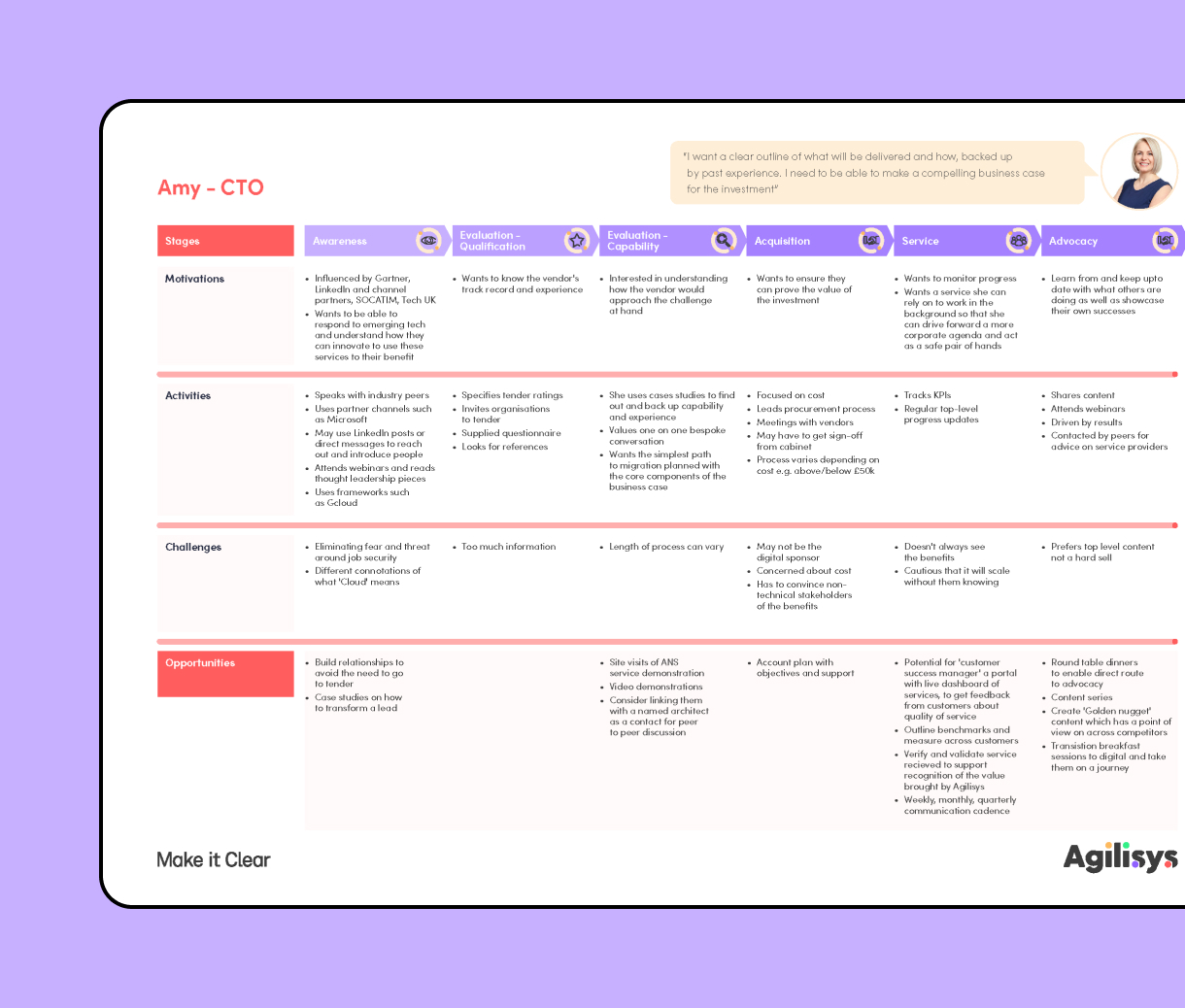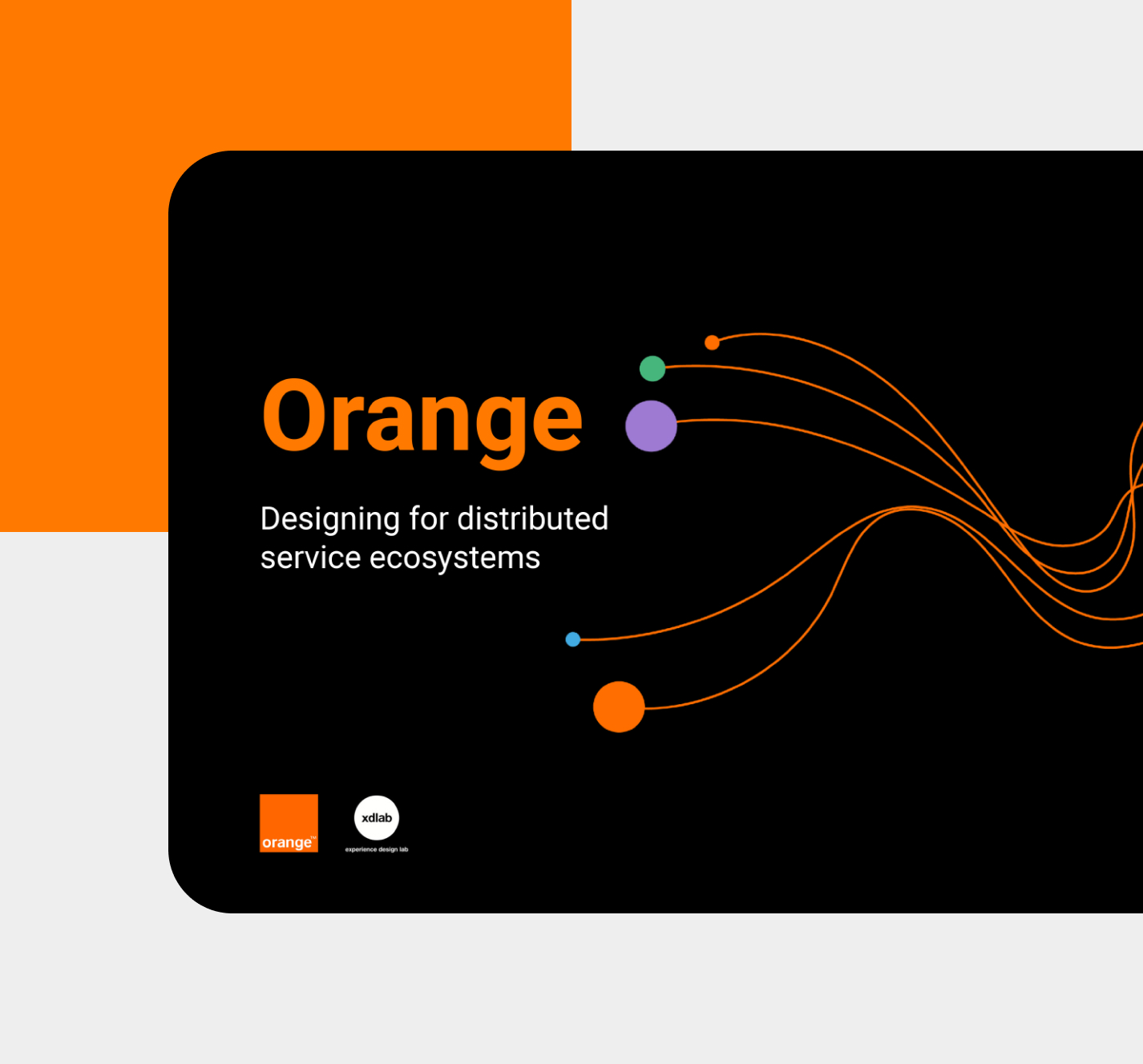Service blueprinting
A service blueprint is a way of mapping a service by creating a visual overview of the customer interactions, actions and teams involved in its delivery.
Service blueprints provide a detailed overview of user touchpoints, actions and emotions, and the service providers’ corresponding frontstage and backstage activities.
Introduction to service blueprints
Service blueprints are visual tools which map out the end-to-end user experience and the internal processes that support it. This is described within Service design as outlining the ‘front-stage’ and the ‘backstage’. Service blueprints can map the ‘as-is’ state of a service in the current day, or they can be used to map the future ‘to-be state.
What is a service blueprint and why is it important?
Used to assess, implement, and maintain a service process, service blueprints can make it easier for teams to design new processes or improve existing ones. Mapping a service blueprint should be a collaborative effort and can help internal teams understand how their individual areas of responsibility combine to deliver the overall service.
Key components of service blueprints
A service blueprint is made up of two key sections which distinguish it from other research outputs such as user journey maps and flows; these are the front stage and the backstage. The front-stage section of a service blueprint includes swim lanes which cover everything the end user sees or interacts with such as customer journey steps, touch points and emotions. The backstage covers everything that happens internally to support the service that the customer does not see, for example, back-end systems, processes and actions. The front stage and backstage work together to provide a holistic view of the service.
The role of service blueprints
Service blueprints aid teams in identifying opportunities for improvement, streamlining processes, and creating more seamless and customer-centric service experiences. Outlining the front-stage and backstage processes can help organisations identify and resolve service challenges and improve overall service delivery. It can also support alignment across the organisation, helping teams to understand their role within the service and facilitate clear communication and required collaboration across departments, leading to more cohesive working. Visual mapping of the service can also aid in training and onboarding new employees, creating a comprehensive view of how their role fits into the service ecosystem and impacts the customer experience. Overall, service blueprints help to close the gap between the customer experience and internal processes, helping to ensure customer interactions are well supported by efficient backend operations.
Benefits of service blueprints
Service blueprints help aid with resource allocation as they highlight resource requirements at each touchpoint and, therefore, ensure the optimal use of technology, staff and materials.
- Holistic view of a service: A service blueprint provides a comprehensive overview of the service, this can be as-is or defining the future state of a service before implementation. Showing the full scope of customer interactions and internal processes is a highly valuable resource to ensure shared and aligned understanding.
- Identification of opportunities for improvement: Having a visual map of service steps helps to map current pain points for both customers and internal teams and highlight opportunities for service enhancement.
- Enhanced customer understanding: Information on frontage customer actions, interactions and challenges should be based on real insight from customers or those with first-hand interactions e.g. customer service teams. Insights gained into customer needs and behaviours from service blueprints help to foster deeper customer understanding.
- Facilitation of cross-functional collaboration: Through illustrating and defining the backend processes service blueprints encourage teamwork across departments, uniting efforts to improve customer experience.
Use cases and applications of service blueprints
Service blueprints can be applied in a variety of scenarios, such as designing new services, optimising existing services, and identifying technology needs. This method can be utilised to map a service that currently exists to create shared understanding, identify challenges and inefficiencies and highlight opportunities to improve customer experiences and service operations. For new services blueprints can be used to ideate and define what the customer journey and interactions should look like and create an opportunity to bring internal teams together to define backend processes and responsibilities.
Tools and templates for service blueprinting
We recommend utilising digital whiteboarding tools such as Miro to capture your blueprint information so that all participants can easily interact and its content can be iterated and defined. Service blueprints should also be seen as a living document able to be updated reviewed and refined at regular intervals, this should be kept in mind when deciding a format for presenting and storing your final outcome. To understand more about the step-by-step process of creating a service blueprint and key things to keep in mind take a look at our articles How to Create Service Blueprints and Six Tips for Service Blueprints.
Supporting your users' needs
Produces user-centric solutions
Improves service efficiency
Identifies pain points and bottlenecks
The stages of service blueprints
Stage 1: Define the goals of the exercise
During the kick-off, we set objectives for the exercise with stakeholders to tailor the blueprint. We also look to identify internal teams which should be involved and existing research or relevant background materials.
Stage 2: Conduct research and gather information
Existing information will be gathered and analysed. This can include personas, journey maps, employee handbooks, system maps and more. Depending on the existing materials shared, further research methods may be needed, such as interviews with employees and customers, observations, site visits, etc. After the synthesis and analysis of this information, workshops will be conducted with internal teams to review, define and align internal processes, actions and systems.
Stage 3: Map and refine the data
Insights gathered are then mapped against the blueprint stages. This often includes information such as user goals and motivations, actions, touch-points, emotions and pain points, as well as internal teams’ responsibilities, support processes, tools and pain points. We invite stakeholders from all relevant teams to review the content, which provides an opportunity to fill any knowledge gaps and ensure all stakeholders are in agreement.
Stage 4: Visualise the service blueprint
Following the workshop, additional information can be added or updated, and the blueprint visualised following the organisation’s brand guidelines.
What’s included
We provide a service blueprint visualisation, which contains an overview of the information included in the blueprint as well as an index.
Why choose Make it Clear
At Make it Clear, we take an evidence-based approach to everything we do. Understanding your organisation, audiences, and the context in which they interact is paramount to how we work and deliver a best-in-class user experience.



